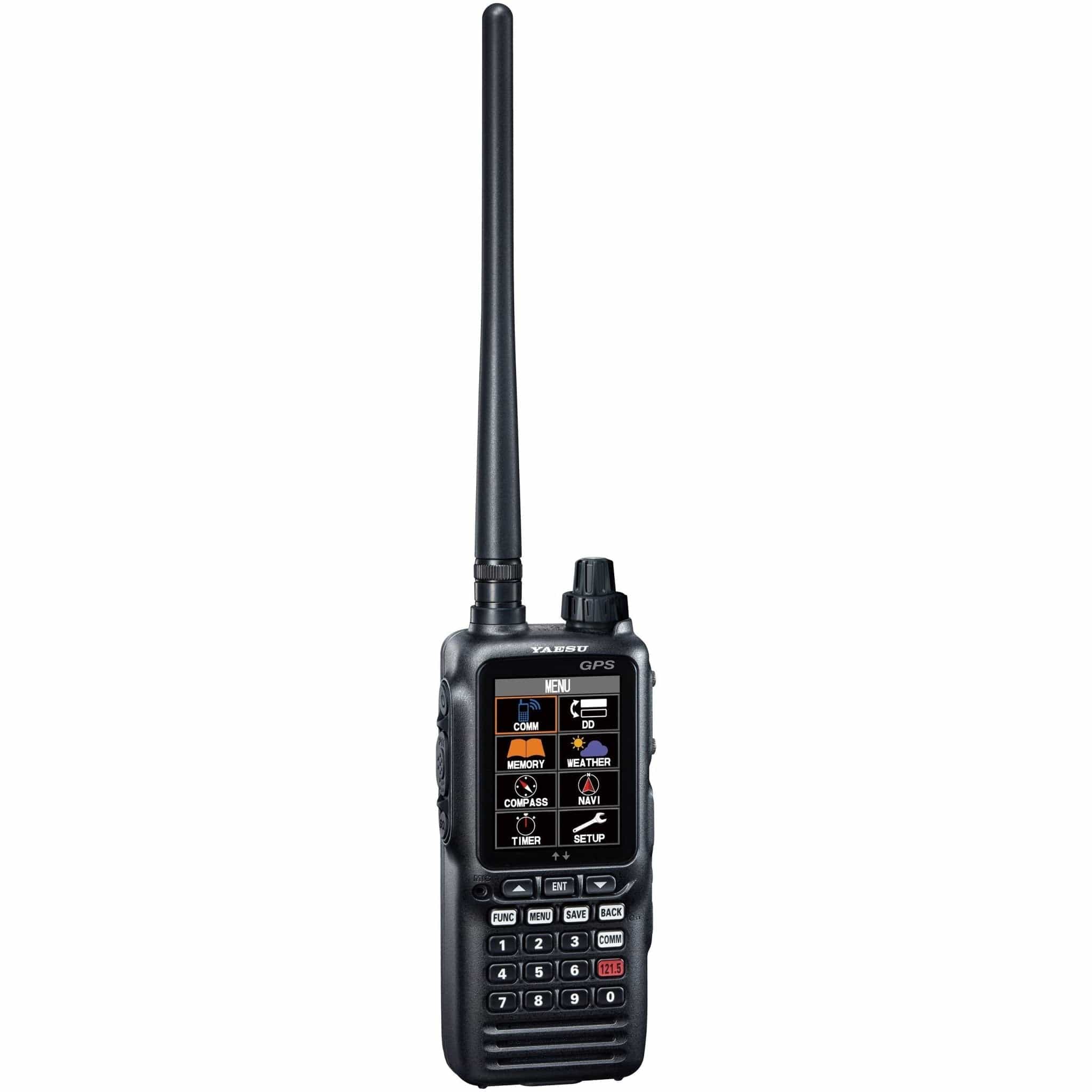Part of every student pilots training includes learning about navigation systems. One of those systems is a VOR.
But what is it?
Well, the VOR (VHF Omnidirectional Range) system has guided pilots since the 1950s and is still actively used as a dependable backup.
Basically, VOR provides bearings that help you find your way, even in low visibility or unfamiliar skies. Despite how old it is, VOR is often relied on as a practical alternative when GPS isn’t available or malfunctions mid-flight.
Let's learn more about VORs and why it's important for pilots to understand how they operate.
SUMMARY
-
VOR, or VHF Omnidirectional Range, is a radio navigation tool that has guided pilots for decades.
-
Using VOR, pilots track specific radials to navigate routes with accuracy.
-
Even with GPS available, VOR serves as a trusted backup if GPS fails.
-
The FAA’s VOR Minimum Operational Network ensures VOR remains a key backup system.
Table of Contents

What is a VOR in Aviation?
So, what exactly is VOR?
A VOR, or Very High Frequency (VHF) Omnidirectional Range, is a navigation system that broadcasts signals on VHF frequencies between 108.0 and 117.95 MHz.
These signals spread out in all directions, like spokes on a wheel, and each one is known as a “radial.” The radial you’re on tells you your position relative to the station, aligning you with a magnetic compass direction.
Your aircraft’s VOR receiver reads two signals: a stationary “reference” signal and a rotating “variable” signal.
The system measures the difference between these signals, called the “phase difference,” to figure out exactly which radial you’re on.
One stationary and one rotating at 30 revolutions per second.
When your VOR receiver captures these signals, it calculates the “phase difference". This allows you to pinpoint your exact radial from the station, which is a line that points in a specific magnetic direction from the ground station to your aircraft.
Each radial, extending 360 degrees around the station, represents a magnetic heading. Meaning you can set your course based on this magnetic north alignment.

How Does VOR Work?
Navigating with VOR is straightforward once you’ve got the basics. In your aircraft, the VOR receiver is connected to a Course Deviation Indicator (CDI), which shows how close you are to your desired radial.
By tuning your VOR receiver to a station’s frequency and selecting a radial, you can stay aligned with a specific route simply by adjusting your heading to keep the CDI needle centered.
As long as you keep the needle centered, you’re staying on course. If it drifts, you’re veering off, and you’ll need to correct your heading to get back on track.
One of the most interesting parts of using VOR is how “reverse sensing” can trip you up if you’re not careful.
This happens when you set the wrong radial direction on your indicator, causing the needle to move opposite to your intended direction.
Say you’re aiming to fly toward a station, but you mistakenly set the VOR receiver to a radial leading away. The CDI needle will indicate the opposite of where you need to go, potentially sending you in the wrong direction.
Pilots are trained to recognize and avoid this by always setting the course correctly on the CDI.
For distance measurements, many VOR stations are paired with Distance Measuring Equipment (DME), called VOR/DME stations.
DME tells you how far you are from the VOR station, offering a complete set of location data when combined with the VOR radial information.
Knowing both the direction and distance helps you precisely pinpoint your position, which is especially useful on approach or when navigating complex airspace.

Using the Course Deviation Indicator (CDI)
In the cockpit, you’ll use a Course Deviation Indicator (CDI) to keep track of your position relative to the radial you’ve chosen.
The CDI includes an Omni-Bearing Selector (OBS), a left-right deviation needle, and a TO/FROM indicator.
Sounds like a lot? Not really.
When you tune your VOR to a specific frequency and pick a radial, the CDI needle shows you how close you are to staying on course. Just keep the needle centered, and you’re set.
If it drifts left or right, adjust your heading to bring it back to the center. The TO/FROM indicator tells you whether you’re moving toward or away from the station, which is particularly useful when navigating between multiple stations(18_phak_ch16).
For flights covering long distances, the CDI helps you stay on track, even without GPS. In complex airspaces, setting one CDI to the next radial while using another as a backup lets you move seamlessly from one station to the next.
This flexibility makes VOR a practical tool for cross-country and IFR navigation.

Morse Code Identifier
Now, let’s talk about identification.
Every VOR station broadcasts a unique Morse code identifier. This feature lets you confirm that you’re tuned to the right station—a must in areas where VOR signals overlap.
While voice identification is available on some VOR frequencies, it’s often less reliable, so stick with Morse code to make sure you’re on the correct frequency.

Usable Altitudes and Range Limitations
VORs aren’t all built the same, and their range depends on their altitude classification. Here’s a quick breakdown:
-
Terminal VOR (TVOR): Works near airports, covering up to 25 nautical miles at altitudes up to 12,000 feet.
-
Low Altitude VOR (LVOR): Operates below 18,000 feet and has a range of 40 nautical miles.
-
High Altitude VOR (HVOR): Covers different altitudes, extending from 40 nautical miles below 14,500 feet to 130 miles at flight levels up to FL450.
But keep in mind, VOR is a line-of-sight system. Mountains, buildings, and even large structures can block or distort signals.
So, if you’re flying low or far away, signal clarity may drop. The FAA’s Chart Supplement U.S. has additional notes on these limitations for specific stations

VOR Limitations
The VOR system is reliable, but it comes with a set of limitations. Since VOR relies on line-of-sight radio signals, obstacles like mountains, tall buildings, or other structures can block or distort the signal.
This limitation means that your aircraft needs to stay within a clear, unobstructed path to maintain connection with a VOR station, especially over long distances or at lower altitudes.
The farther you are from the station, the higher you need to fly to keep a stable signal.
The “Cone of Confusion”
You’ll want to be aware of something called the “cone of confusion.”
This happens when you’re directly above a VOR station—signals weaken, and your CDI might start acting up.
Instead of giving steady feedback, the CDI needle jumps around, which can throw you off if you’re relying on it alone. During this crossover, it’s better to rely on other instruments briefly.
Luckily, the cone is only directly above the station, so once you pass, the CDI should settle back down
Regular Testing and Accuracy
VOR is accurate within ±1°, which is solid, but equipment needs to be tested regularly to stay reliable. If you’re flying VFR, the FAA doesn’t require these checks, but periodic testing is a good idea. Here’s how to keep your VOR in check:
-
FAA VOR Test Facility (VOT): Offers a reference signal to test your VOR receiver.
-
Certified Airborne and Ground Checkpoints: Available at some airports, these let you confirm your alignment with station radials.
-
Dual Receiver Check: If your plane has two VOR receivers, tune them to the same station and compare—both should match within a 4° tolerance.
If you’re flying IFR, FAA standards mandate a maximum 4° difference for ground checks and 6° for airborne checks. Log these results in your aircraft’s records to keep a record of VOR accuracy.
Regular checks keep your navigation precise, which is especially important when flying under instrument conditions.

VOR and Modern Navigation
You may be wondering, “Why bother with VOR if we have GPS?”
Good question.
VOR may seem old-school, but the FAA’s VOR Minimum Operational Network (MON) provides a dependable backup for situations where GPS is unavailable.
MON stations are strategically positioned to ensure coverage at 5,000 feet above ground level across most areas. This redundancy lets you navigate safely even if GPS fails.
Plus, practicing VOR navigation keeps your skills sharp. Over-relying on GPS can lead to dependency, while VOR navigation builds a solid foundation for any pilot. Having this backup in your toolkit makes for more confident flying
To this day, some pilots use VOR approaches even when GPS is available, simply for practice or due to local requirements.
It’s one of the few navigation skills that still rely heavily on the pilot’s ability to interpret real-time instrument readings without digital assistance, a skill that many in aviation feel shouldn’t be lost.

Frequently Asked Questions
-
What is the range of a VOR signal?
The range of a VOR signal depends on both your altitude and the power of the ground station.En route VOR stations can transmit signals up to 200 nautical miles. Terminal VOR stations, typically located near airports, have shorter ranges, around 25 nautical miles.
-
Why is VOR still used when GPS exists?
Although GPS is more accurate and easier to use, VOR is still maintained as a backup system.In the event of GPS failure, VOR ensures that pilots can navigate safely. This redundancy is crucial, especially in areas where GPS outages might occur.
-
How often do you need to test VOR equipment?
If you’re flying under Instrument Flight Rules (IFR), you must test your VOR receiver every 30 days.This involves either a ground-based VOR test or an airborne check using specific radials at known locations.
-
What happens during "reverse sensing"?
Reverse sensing happens when the instrument shows the opposite of what it should.If you’re flying toward a station but your instruments are set to indicate a radial from the station, your course needle will act in reverse, possibly leading you in the wrong direction.
Takeaway
Just because GPS is becoming the dominant navigation tool doesn't meant that VOR isn't a valuable fundamental skill and a useful backup.
As aviation technology advances, the classic VOR system stands as a reminder of the tried-and-true methods that laid the foundation for today’s high-tech navigation systems.
Both students and seasoned aviators can learn a lot from realizing how VORs can be a major asset in the air.
Keep safe pilots!
Interested in Flight Instruments?
Our guides are designed to help!
Did you find this article helpful?
Do you think we missed an important interview question? Let us know in the comments below!







